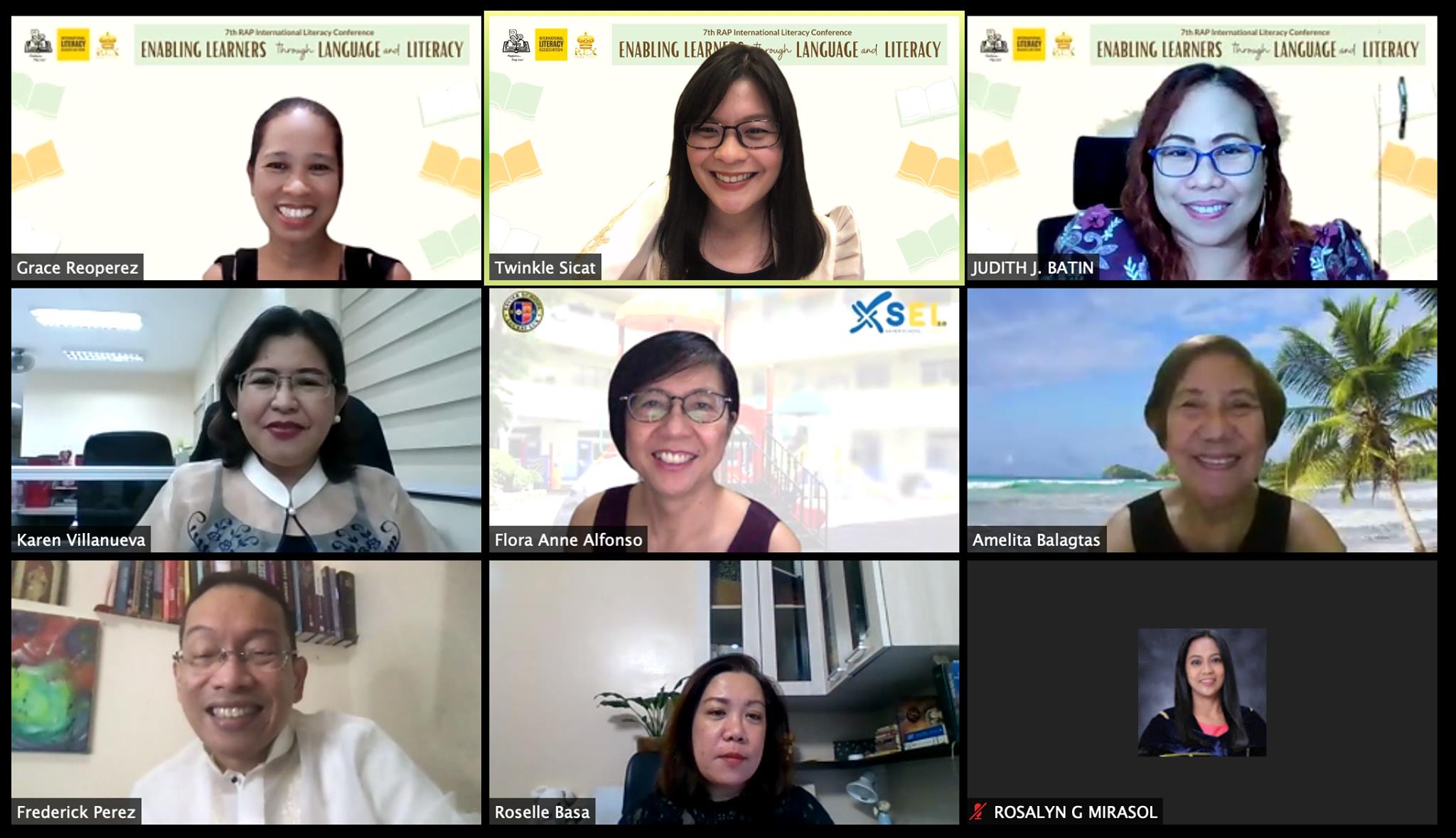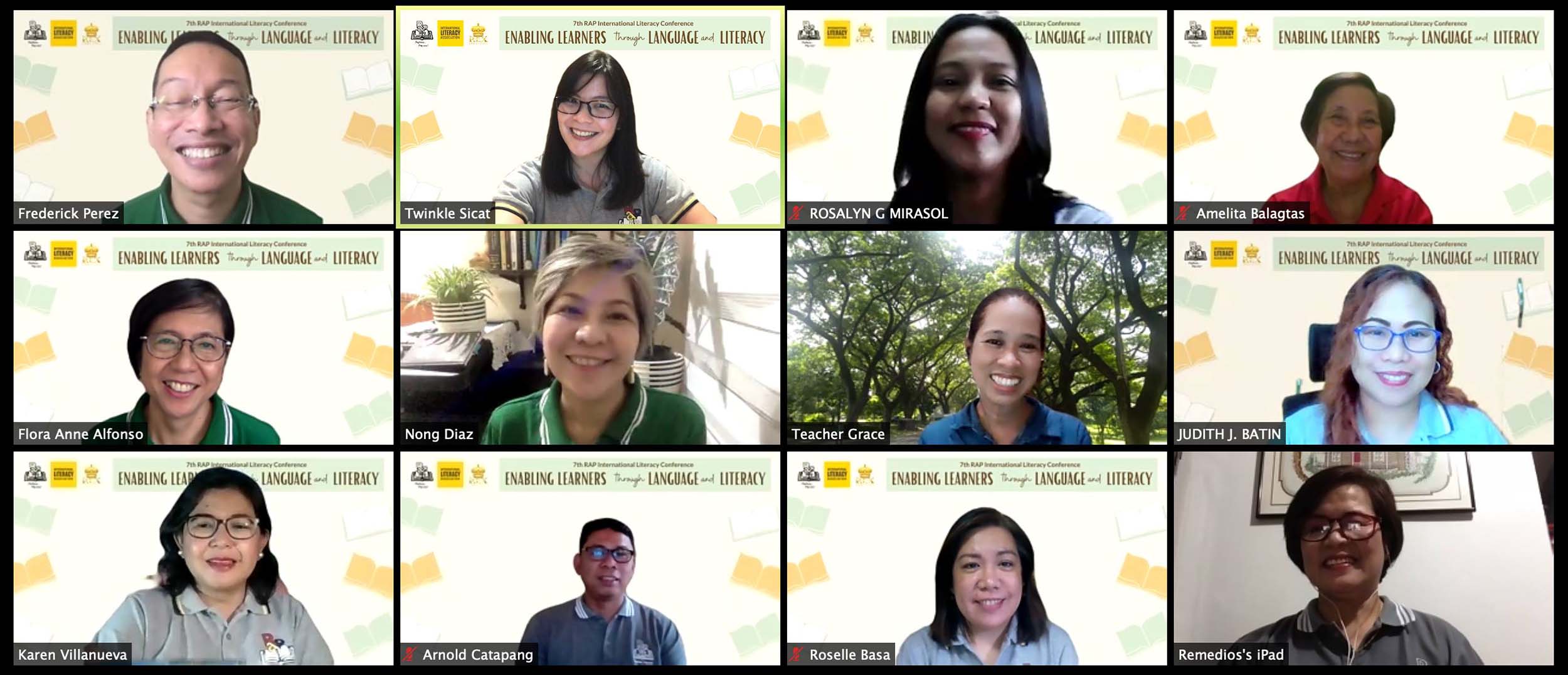Enabling Learners Through Language and Literacy : 7th RAP International Conference
July 25, 2021The Reading Association of the Philippines gathered more than 250 educators from all over the world with speakers, presenters, and participants coming from Asia and North America. The three-day international conference was made possible in partnership with Rex Education.
In his opening remarks, RAP President Frederick S. Perez spoke about the 50th foundation anniversary of the organization in 2020 which did not push through due to the current health crisis. Although the plans for the jubilee celebration did not materialize, RAP continued its literacy advocacy through various webinars streamed through the organization’s FB page. Morever, partnerships for book drives and training webinars with government and non-governmental organizations were also pursued. He invited the assembly to continue supporting RAP through its various projects in the coming months.
The keynote speech was delivered Dr. Timothy Rasinksi, former President of the International Literacy Association (ILA). Rasinski emphasized how the fundamental knowledge on morphology and fluency helps in language and literacy learning.
For the first plenary speech, Dr. Sonali Nag of Oxford University emphasized the importance of the child’s context in order to learn how to read and gave pedagogical principles to help both the teachers and the learning guardians of the child.
Research presentations in the different strands explored questions and recommendations to aid educators in responding to the demands and challenges of teachers and students in the traditional classroom and the online and modular setup.
The panel discussion “UsapTayo, Para sa Bata: A Closer Look at Children’s Books” presented by Portia P. Padilla, Dina Ocampo, Margaret Mary Rosary Carmel E. Fua, Kathrina Lorraine Lucasan, Leonor Diaz, Ana Maria Margarita S. Salvador, and Sonali Nag revealed to us many new insights on book leveling and age-appropriateness of reading materials.
There was a showcase of best practices of the ‘experts in the field’, the classroom teachers, as they shared their teaching discoveries during the health crisis.
The first day ended with the plenary session on understanding teens and the way they read with Dr. Portia Padilla straight from Canada. She presented some problems and prospects in adolescent literacy and introduced the Active View of Reading Model by Duke and Cartwright. The participants discovered new literacies, multiple literacies, and multimodal literacies for junior and senior high school. Padilla emphasized that readers are affected by the text, the task, and their socio-cultural context.
On July 23, the second day of the conference, the RAP President delivered the talk for Dr. Cynthia McDermott of Antioch University. Her session focused on literacy for intermediate grades. The whole day was marked by sharing of best practices on new methods and strategies, and research presentations from K-12 practitioners.

On July 24, the concluding talk was given by Dr. Jose Lalas from the University of Redlands in California. He gave the participants a perspective on language and literacy development with more emphasis on critical traditions of educational practice and the importance of social and political contexts in understanding words and the world.

At the end of the conference, Dr. Rosalyn Mirasol, RAP Vice-President and Conference Director, thanked her co-chairs Ms. Roselle Basa and Ms. Karen Villanueva, the RAP Board and Past Presidents by offering to all the latest edition of the RAP Journal.
(To listen to the keynote speech of Dr. Timothy Rasinski, kindly follow this link: https://video.kent.edu/media/Using+Language+Patterns+to+Enable+Literacy+Learners/1_h4uarwug)
